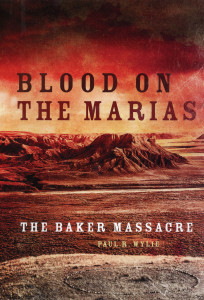 Although the Baker Massacre has been documented in other texts, author Paul Wylie brings the tragedy front and center with a detailed account of what happened in the early morning hours of January 23, 1870 on the Marias River.
Although the Baker Massacre has been documented in other texts, author Paul Wylie brings the tragedy front and center with a detailed account of what happened in the early morning hours of January 23, 1870 on the Marias River.
Years of tension had been building between the encroaching white population and the Piegans in the Montana Territory prior to the heinous event. U.S. Army soldiers, under the command of Major Eugene Baker, descended on a winter encampment of friendly Piegans, killing 173 women, children and old men, many of them ill with smallpox. The natives were defenseless as the able-bodied men were away hunting.
The leader, Chief Heavy Runner, tried to show the soldiers his “name papers,” but was killed immediately. Only a very few escaped the violence, hiding in the brush on the riverbank.
Even though he was directed to the wrong camp, and the attack was meant for another group, Major Baker was regarded as a hero by many of his peers and Montana newspapers wrote glowingly of him. However, when the news reached eastern newspapers, the incident became a national scandal and eventually resulted in a congressional hearing.
Wylie’s extensive research paints a detailed picture of the setting, and sets the tone for the sentiment of the times. He gives a thorough look at the military officers, many of them battle-hardened by their Civil War duty. The book contains several black and white photographs and an impressive bibliography.
“… Paul Wylie takes on this difficult story in a smartly written, exhaustively researched account that begins in the earliest days of Piegan contact with whites and carries through their darkest hour. It’s a tough tale, rightly well told,” says author Paul L. Hedren.
Wylie, a retired attorney who lives in Bozeman, also wrote The Irish General: Thomas Francis Meagher.
– Judy Shafter